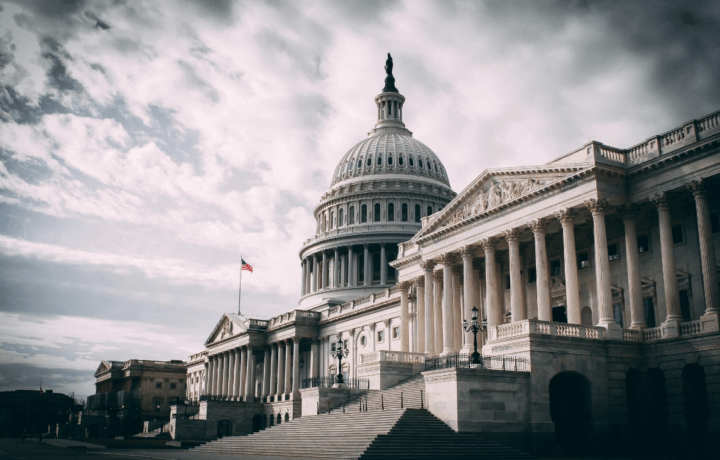The mission of working for the federal government runs deep in its workers. But a recent report from the Partnership for Public Service highlights the divide between the federal government’s talent needs and its hiring practices. The heart behind their “Time for Talent” report is one that seeks change for an aging federal workforce that has gaps that will need to be quickly filled. Today only 6.3% of the federal workforce is under the age of 30, and 44.8% are over the age of 50.
5 Reasons the Federal Government Struggles to Find TOp Talent
Margot Conrad, director for Government Affairs at the Partnership for Public Service explains, “It is critically important that agencies invest in building talent pipelines for the future – that means strategically evaluating talent needs, recruiting more effectively and efficiently selecting the most-qualified candidates and bringing them on onboard and capitalizing on internships as a primary way to build talent pipelines.”
Working for the government provides the ability to make changes and support the country. However, the hiring process often slows down the government’s capabilities – either with unfilled positions or inadequate candidates. While recruiting is another issue, here are five reasons the federal government struggles to get top talent in the door.
1. Antiquated Hiring Process
The current federal hiring process takes 98 days, on average. With a process that takes double the time as the private sector, it’s no wonder that it’s hard to find candidates willing to wait for that. Additionally, only 42% of federal employees trust that their agency can find the talent they need to support their mission.
2. Lack of Hiring Strategy
Currently, the federal government relies on simply filling open billets when talent leaves the federal workforce. Rather than assessing the open position based on need, hiring becomes a reactionary process. Without a strategic hiring approach that involves workforce planning, identifying talent needs past the immediate openings, the federal government will continue to maintain open billets with unfilled positions.
3. Ineffective Recruiting Methods
Too often, agencies simply post their open position on USAJobs, and then sit back to wait for a response to make it through the system. USAJobs is not a recruiting system, but rather, just a job board. Unfortunately, many have found it confusing and frustrating to use. Without active recruiting methods to sell the agency’s mission and the work involved, top talent remains unaware of the opportunities in public service.
4. Talent Selection Process
Digging through the pool of applicants can be overwhelming. Additionally, sorting through what made it past self-assessment questions doesn’t mean the best have actually applied. With 98 days as the average time to hire, the process naturally weeds out the applicants who don’t have that kind of time or patience on their hands. Candidates often feel like submitting their resume into USAJobs is like submitting it into a black hole. The candidate engagement process is key in attracting top talent early on and keeping their attention throughout the process.
5. Home Grown Pipeline
While the federal government strives to put practices in place that do not trend towards favoritism, this practice almost encourages agencies to ignore the candidates right in front of them. Interns or Systems Engineering and Technical Assistance (SETA) contractors are great potential candidates for the federal government to find ways to onboard smoothly into an open position. However, despite confirmed credentials and completed background checks, it can still take a long time to onboard. The bloated timelines can easily lend to losing qualified and motivated candidates.
Examples of Positive Moves for the Federal Workforce
Some agencies have already begun to make changes that others can emulate.
- FBI – The FBI’s attrition model has helped them be more strategic in their recruiting for new talent. Additionally, they have reduced their time to fill a position. With an attrition model that predicts upcoming hiring needs, as well as, hiring timelines, the agency is better poised for success in the recruiting process.
- NASA and TSA – Both of these agencies have increased their brand awareness online with featured employees and mission. It’s important to put a face with the name to attract future talent.
- U.S. Digital Service – The U.S. Digital Service has brought in subject matter experts (SMEs) to help with reviewing resumes and the interview process in order to ensure the right candidate makes it through the hiring process. When a specific skillset is needed, agencies need to be more proactive in finding it.
- The Department of State – The DOS has a database called Pathways Interns that identifies interns who are eligible for a conversion to employment. If open positions aren’t available at the moment, other offices can access the database for the available talent. Tools like this help identify top performers and bypass the federal onboarding process.
Bring in the next Generation
Without a change in recruiting and onboarding, gaps will remain unfilled and critical needs will remain unmet. During COVID-19, critical needs have risen, highlighting how federal agencies need to be able to quickly find and hire the right personnel in order to meet the mission. By reaching young talent through internships and entry level positions, the federal government can begin to fill the gaps and train up the next generations of employees. Lack of a smart phone application and an awkwardly long application process will weed out qualified candidates. The younger generations also appreciate feeling connected to meaningful work. Putting faces and giving stories to agencies can help draw in top talent.




